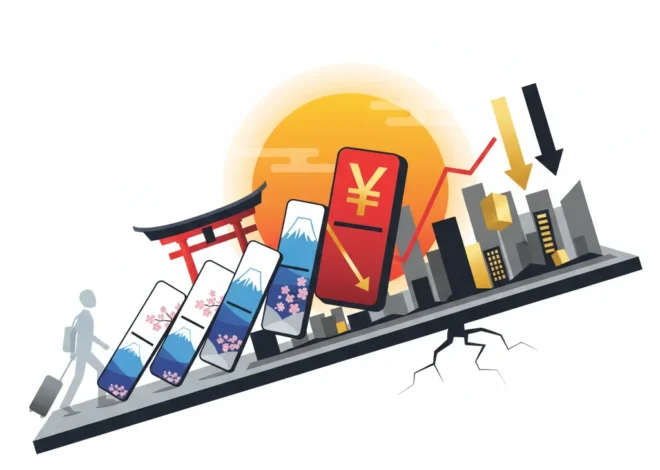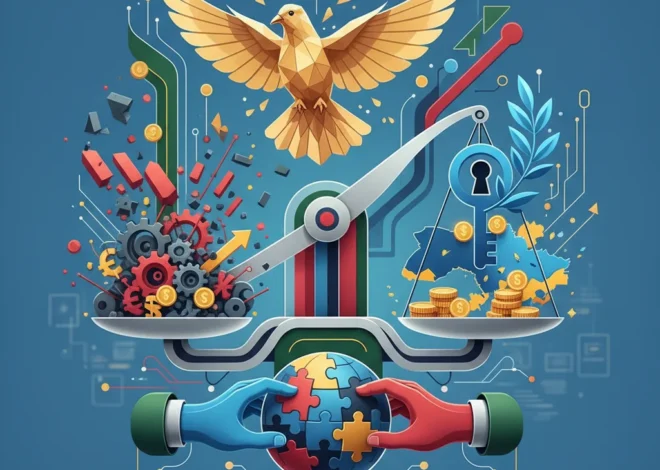
The Cold Truth: Why Fuel Poverty is a Critical Economic Indicator for Investors and Leaders
In the quiet hum of financial markets and the strategic discourse of boardrooms, it’s easy to overlook the ground-level economic tremors that signal larger shifts. One such tremor, growing in intensity, is the stark warning issued by Citizens Advice: millions of households will soon face the devastating choice “between heating and eating.” While this sounds like a social welfare headline, for the astute investor, finance professional, or business leader, it is a critical, front-line indicator of deep-seated economic instability. Fuel poverty is not merely a humanitarian crisis; it’s a barometer for consumer confidence, a stress test for the banking sector, and a direct threat to economic growth.
This escalating crisis transcends headlines about energy bills. It signifies a contraction in disposable income so severe that it will inevitably ripple through the entire economy, impacting everything from retail sales and stock market performance to the very stability of our financial infrastructure. Understanding the multifaceted impact of fuel poverty is no longer optional—it’s essential for navigating the complex economic landscape ahead.
Deconstructing Fuel Poverty: More Than Just a High Bill
To grasp the financial implications, we must first define the problem with precision. Fuel poverty isn’t simply about facing a high energy bill. In the UK, a household is officially considered to be in fuel poverty if it has a low income and high energy costs. Specifically, a household must have a residual income (after energy costs) below the official poverty line and higher-than-average energy costs. According to the UK government’s most recent annual report, an estimated 3.17 million households in England were in fuel poverty in 2023, a number that many charities believe underrepresents the true scale of the struggle.
This isn’t a static issue. It’s a dynamic crisis fueled by a confluence of factors: volatile wholesale gas prices, geopolitical instability, lagging wage growth, and an aging, energy-inefficient housing stock. The result is a perfect storm where a fundamental necessity becomes a luxury, forcing a cascade of negative financial decisions upon millions.
The Mamdani Effect: Why a Local Election Signals a Seismic Shift in Geopolitical Investing
The Macroeconomic Ripple Effect: From Kitchen Table to Stock Market
When a significant portion of the population diverts its income to basic survival, the entire economic engine begins to sputter. This is not a contained issue; it’s a systemic risk with far-reaching consequences for the broader economy and investment portfolios.
1. Contraction in Consumer Spending
The most immediate impact is a sharp decline in discretionary spending. When a family’s budget is consumed by energy bills, non-essential purchases are the first to go. This directly impacts:
- Retail Sector: Clothing, electronics, and home goods retailers will see reduced footfall and sales.
- Hospitality: Restaurants, pubs, and entertainment venues will suffer as people cut back on leisure activities.
- Big-Ticket Items: Purchases like cars and major appliances will be postponed indefinitely.
This spending freeze directly impacts corporate earnings, which in turn affects stock market valuations. Investors holding significant positions in consumer-discretionary stocks must re-evaluate their risk exposure in an environment of prolonged fuel poverty.
2. Inflationary Pressures and Monetary Policy
High energy prices are a primary driver of headline inflation. This creates a difficult dilemma for central banks. While they may be inclined to raise interest rates to combat inflation, doing so further squeezes households with mortgages and other debts, exacerbating the cost-of-living crisis. This tightrope walk between controlling inflation and triggering a deep recession is a central challenge for modern economics, and fuel poverty is at its heart.
3. The Strain on Public Finances
Governments are inevitably forced to intervene with support packages, energy bill caps, and subsidies. While necessary, these measures place an enormous strain on public finances, potentially leading to higher national debt, increased taxes in the future, or cuts to other public services. For investors, the state of a nation’s finances is a key indicator of its long-term stability and currency strength.
To illustrate the dramatic shift in household financial pressure, consider the evolution of energy costs over the past few years. The following table provides a simplified overview of the energy price cap for a typical dual-fuel household in Great Britain, demonstrating the volatility that has pushed millions into hardship.
| Price Cap Period | Typical Annual Bill (Direct Debit) | Percentage Change (Approx.) |
|---|---|---|
| Winter 2021/22 (Oct-Mar) | £1,277 | – |
| Summer 2022 (Apr-Sep) | £1,971 | +54% |
| Winter 2022/23 (Oct-Dec) | £2,500 (Govt. Guarantee) | +27% |
| Summer 2023 (Jul-Sep) | £2,074 | -17% |
| Winter 2023/24 (Jan-Mar) | £1,928 | -7% |
Source: Data compiled from Ofgem announcements. Note: The £2,500 figure for Winter 2022/23 reflects the government’s Energy Price Guarantee, which superseded a much higher Ofgem cap.
The Role of Finance, Banking, and Technology
The financial sector is both exposed to the risks of fuel poverty and uniquely positioned to offer solutions. The pressure on the banking system is palpable as defaults on loans, credit cards, and mortgages are likely to increase. A rise in non-performing loans could impact bank profitability and stability, a key concern for shareholders and regulators.
However, this challenge also presents an opportunity for innovation, particularly in financial technology. Fintech can play a crucial role in mitigating the crisis:
- Budgeting & Analytics Tools: Advanced fintech apps can help individuals manage squeezed budgets, identify potential savings, and access entitled benefits.
- Micro-lending Platforms: Responsible, low-interest micro-loans for energy efficiency upgrades (like insulation or new boilers) could offer a long-term solution, representing a new market for ethical lending.
- Smart Payment Systems: Financial technology can facilitate more flexible payment plans with utility companies, helping people avoid the debt spiral associated with missed payments.
Looking further ahead, some technologists are even exploring how blockchain could be leveraged. A decentralized energy grid, for example, could allow for peer-to-peer energy trading, where households with solar panels could sell surplus energy directly to their neighbors. While still a nascent concept, it points towards a future where technology could disrupt the traditional energy market and empower consumers, a development that those involved in technology investing should monitor closely.
Beyond the Textbook: The High-Stakes Debates Redefining the Future of Finance
Navigating the Investment Landscape: Risks and Opportunities
For investors, the rise of fuel poverty necessitates a strategic portfolio review. The risks are clear: consumer-facing sectors are vulnerable, and the broader stock market may face headwinds from a slowing economy. However, proactive investors can also identify significant opportunities.
ESG (Environmental, Social, and Governance) Investing: The “S” in ESG is now in the spotlight. Companies that demonstrate a genuine commitment to supporting their employees and customers through this crisis may build stronger brand loyalty and long-term value. Furthermore, investing in companies that are part of the solution is becoming increasingly attractive.
The Green Transition: The crisis has underscored the urgent need to move away from volatile fossil fuels. This accelerates the investment case for:
- Renewable Energy: Companies in wind, solar, and energy storage are central to long-term energy security.
- Energy Efficiency: Businesses specializing in home insulation, smart thermostats, and energy-efficient heat pumps are poised for significant growth, driven by both consumer demand and government incentives. A recent report by the Climate Change Committee (CCC) has repeatedly highlighted energy efficiency as a key pillar of the UK’s net-zero strategy.
This is not just about ethical investing; it’s about sound financial logic. The transition to a more sustainable and equitable energy system is one of the most significant economic shifts of our time, and the current crisis is acting as a powerful catalyst. Those in trading and long-term investing alike should take note of the policy tailwinds supporting these sectors.
Conclusion: A Call for Economic Foresight
The warning from Citizens Advice is a crucial data point that must be integrated into our economic and financial models. Fuel poverty is a clear and present danger to social well-being, but its implications extend deep into the heart of our economy. It dampens consumer spending, complicates monetary policy, strains public finances, and presents both risks and opportunities across the stock market.
For business leaders, it’s a call to understand the immense pressure on your customers and employees. For finance professionals and investors, it is a reminder that macroeconomic health is inextricably linked to the financial well-being of the individual. Ignoring the cold truth of fuel poverty is not just a social oversight; it’s a strategic economic miscalculation.


